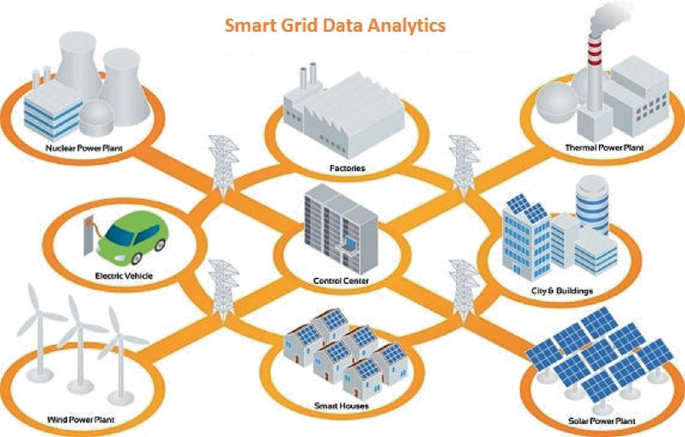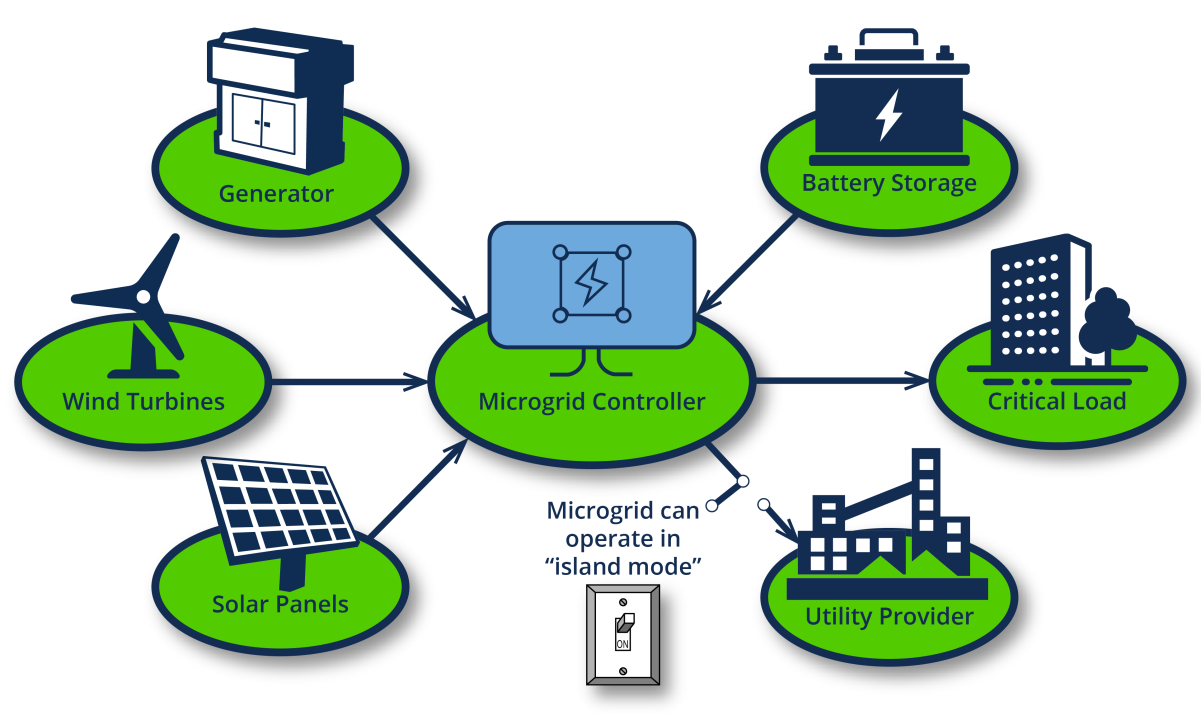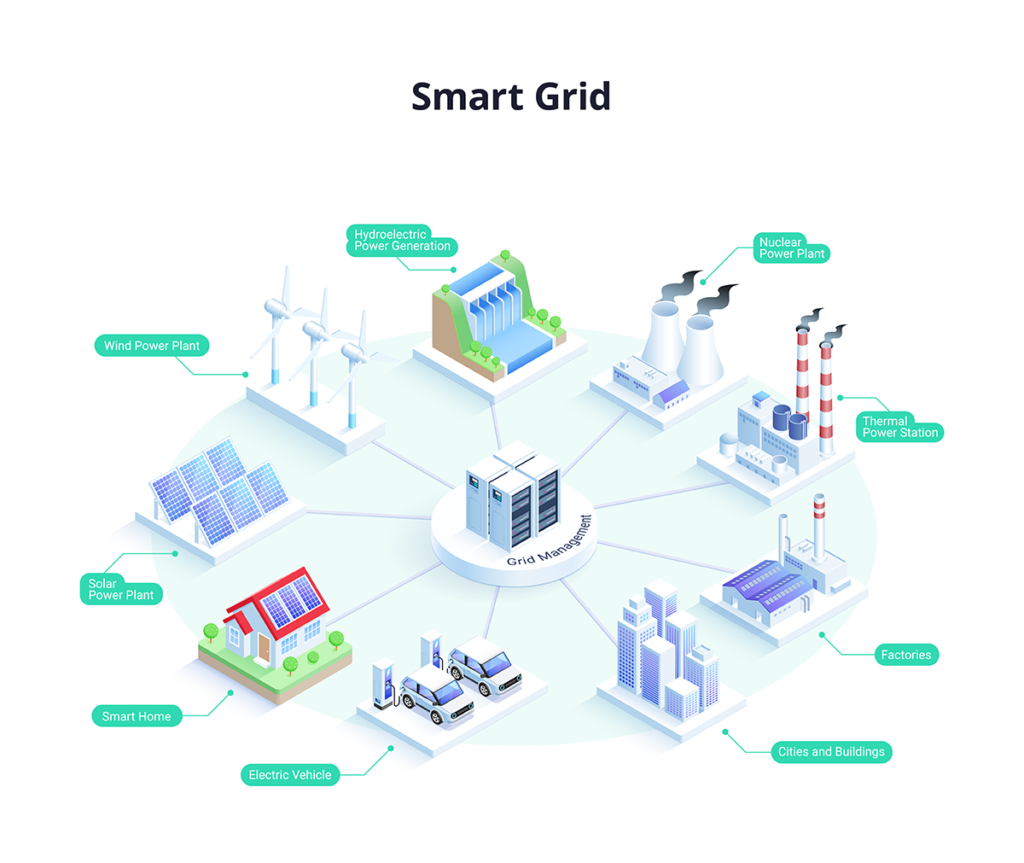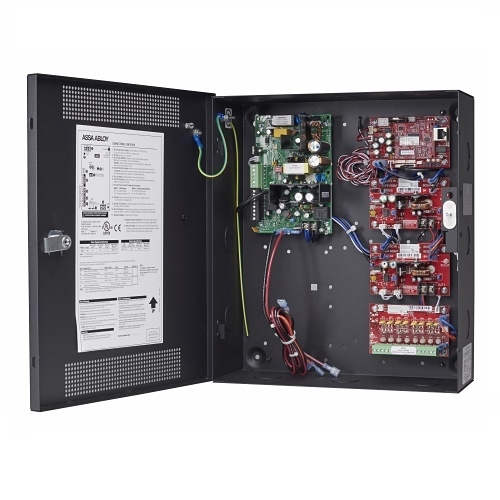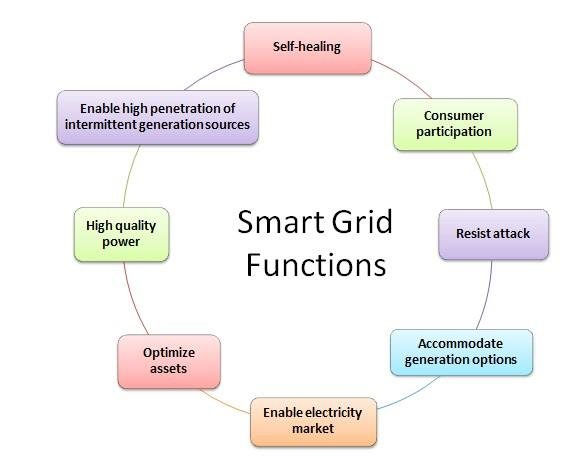Overview
The smart grid is a new model for modern power networks that applies a range of advanced technologies, including the Internet of Things, cloud computing, big data, and artificial intelligence, to enable optimized, coordinated, and intelligent management of power systems. The objective is to improve system safety and reliability. The core of the smart grid lies in its intelligent technologies and management approaches.
Core Technologies
- Intelligent sensing technologies: Sensors and smart metering devices collect key grid data such as load, voltage, and current, and transmit it in real time to supervisory systems for processing and analysis.
- Intelligent control technologies: Advanced control algorithms and smart devices are used to dispatch and control grid equipment, ensuring stable and efficient operation.
- Coordinated intelligence: Big data and artificial intelligence, together with management of distributed energy resources, enable coordinated scheduling across subsystems to optimize grid performance.
- Security technologies: Intelligent techniques enhance grid security by enabling real-time monitoring, fault prediction, and preventive measures to reduce the likelihood of grid incidents.
- Service technologies: Internet-based and intelligent service mechanisms establish service systems for information management, intelligent scheduling, and tariff management.
Core Management Models
- Visualization: Intelligent methods provide visualized management of the power system, including load, power supply quality, and fault alerts, making operations more intuitive.
- Predictive management: Data analysis is used to detect issues in advance, issue warnings for abnormal nodes, and guide corrective actions.
- Automated regulation: Intelligent mechanisms automatically adjust and optimize system operating states to achieve best performance and enhance safety and reliability.
- Technology-driven innovation: New technologies and models are continuously introduced and integrated with operations to iteratively improve grid efficiency.
Key Applications
Built on integrated, high-speed bidirectional communication networks, the smart grid employs advanced sensing, measurement, equipment, control methods, and decision-support systems to achieve reliable, safe, economical, efficient, and environmentally friendly power delivery. Typical features include self-healing, user protection and incentives, resilience to attacks, provision of required power quality, accommodation of diverse generation types, enablement of electricity markets, and optimized asset operation.
- Renewable energy integration: The smart grid enables effective control and management of renewable generation such as solar and wind, improving their utilization in the power system.
- Energy monitoring and management: Real-time monitoring and management allow optimized dispatch, improved energy efficiency, and reduced consumption.
- Energy trading: Virtual trading platforms support market-based electricity transactions, promoting resource sharing and utilization.
- Energy storage: The grid facilitates management and utilization of storage technologies such as battery storage and fuel cells.
- Endpoint control: Smart meters and connected appliances enable intelligent control and management at the grid edge.
- Security and stability: Monitoring and predictive capabilities enhance system security and stability, enabling prevention and timely handling of faults.
- Social and environmental benefits: The smart grid improves energy efficiency, reduces consumption and environmental impact, and supports sustainable development.
In summary, the core technologies and management models of the smart grid are complementary: technologies provide the foundation and capabilities, while management approaches ensure those technologies are effectively applied.
 ALLPCB
ALLPCB


